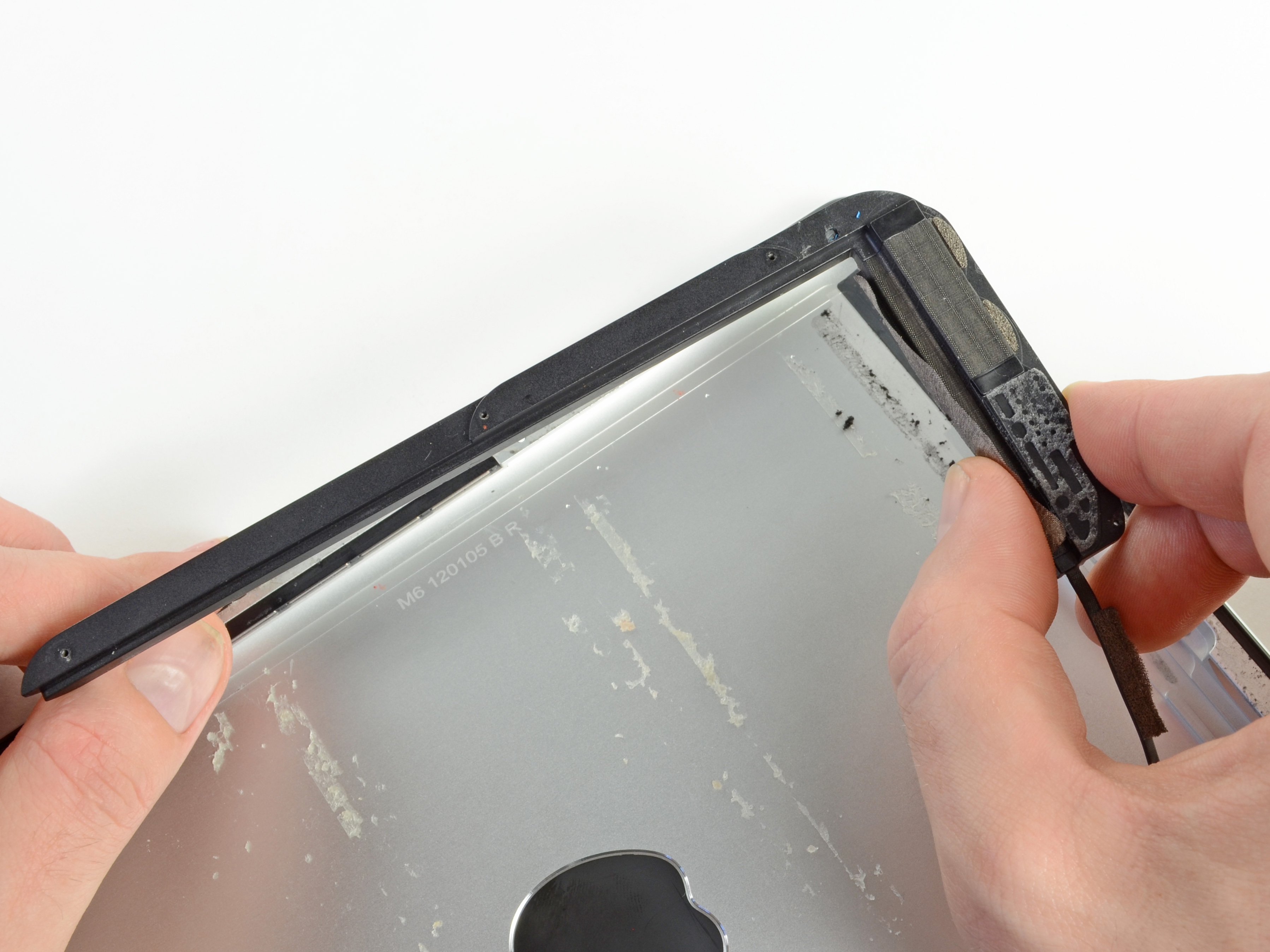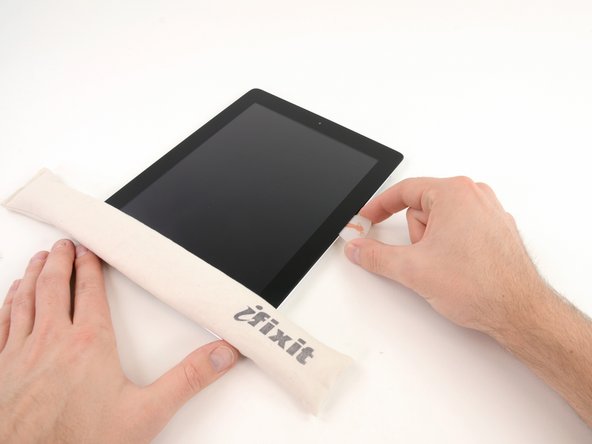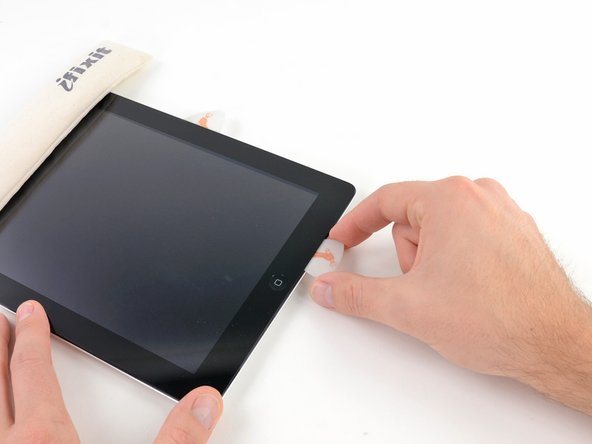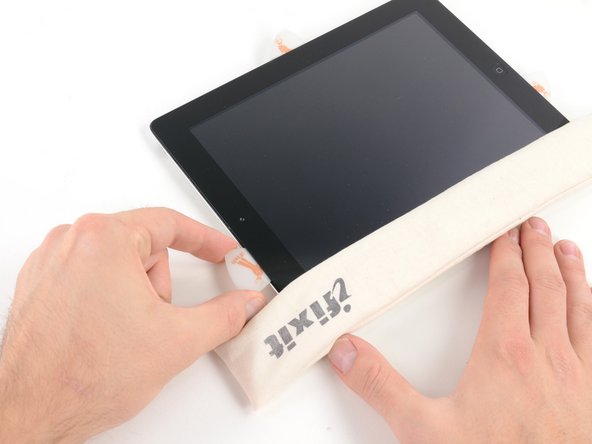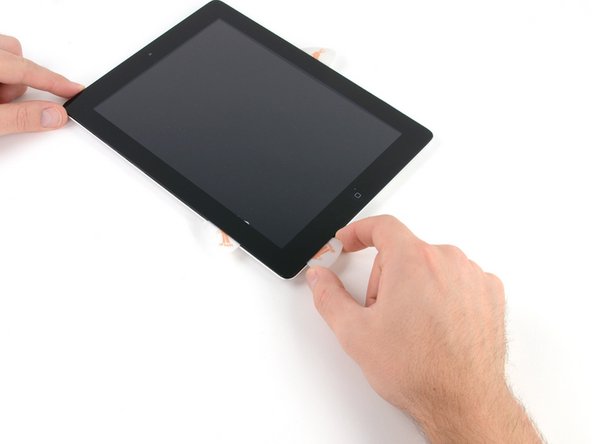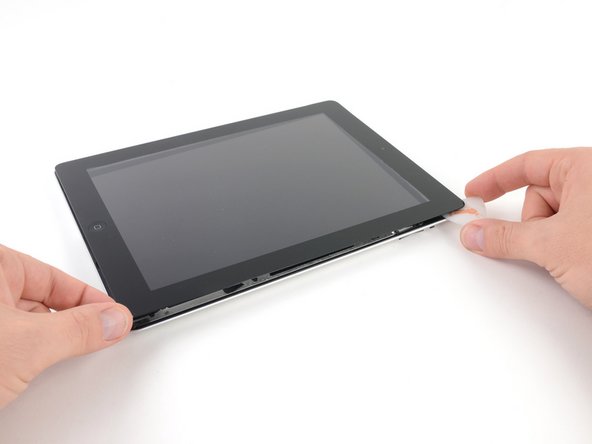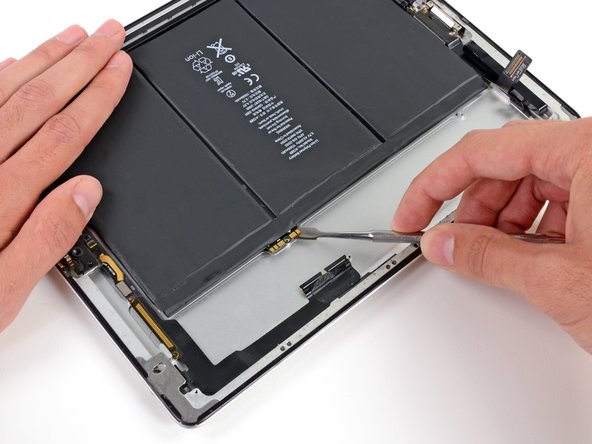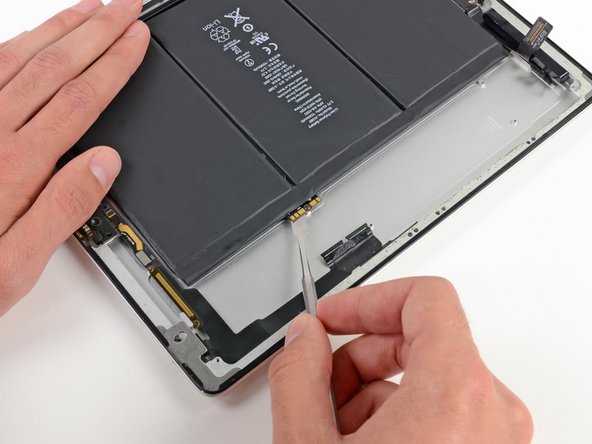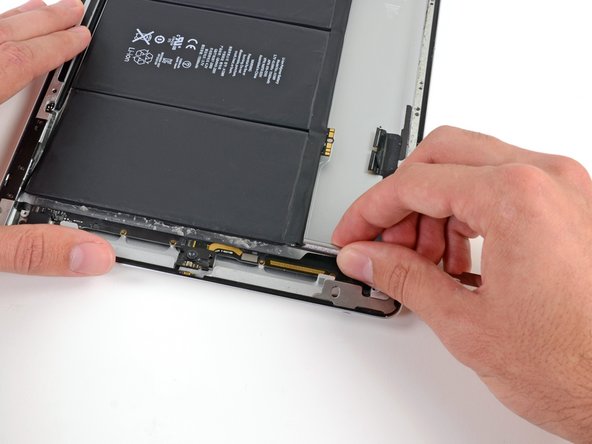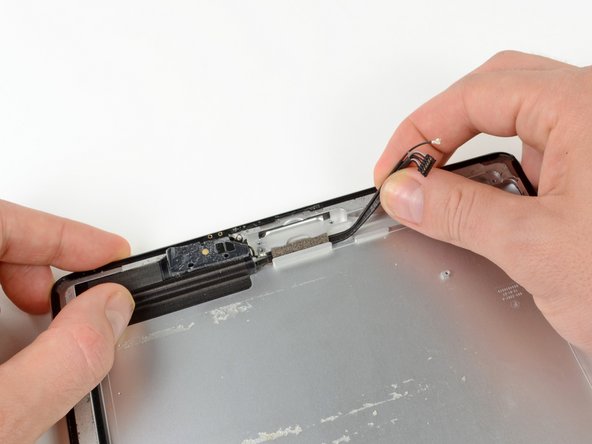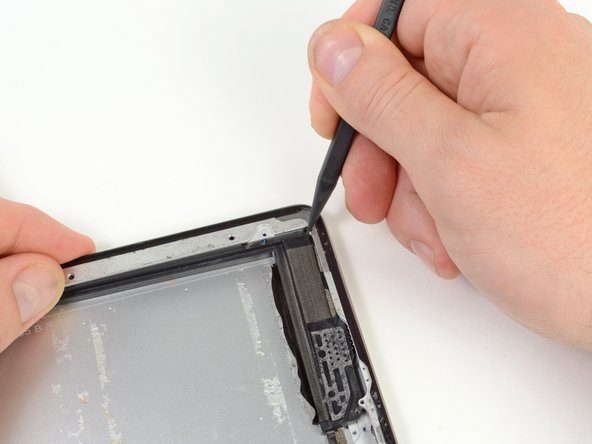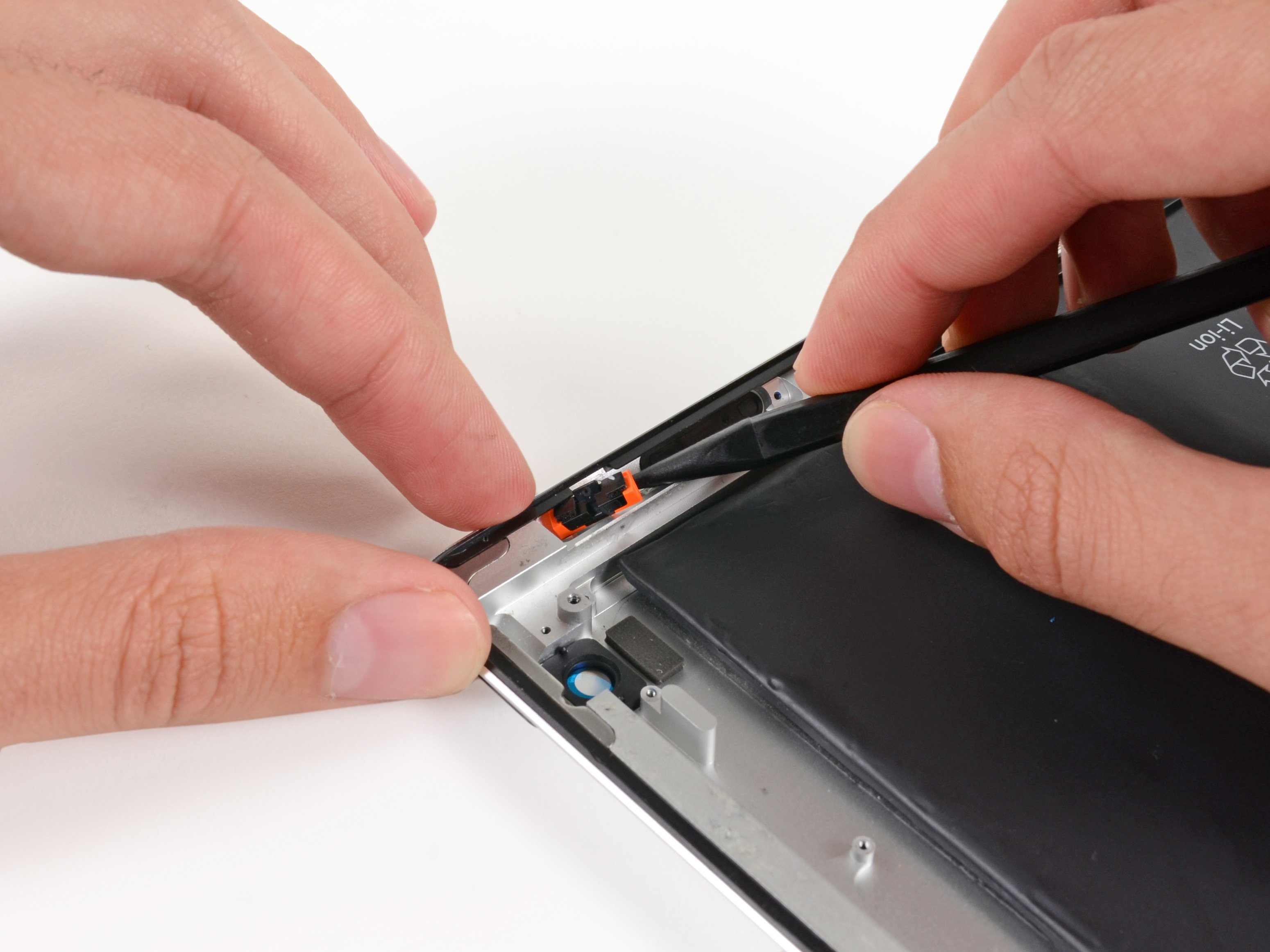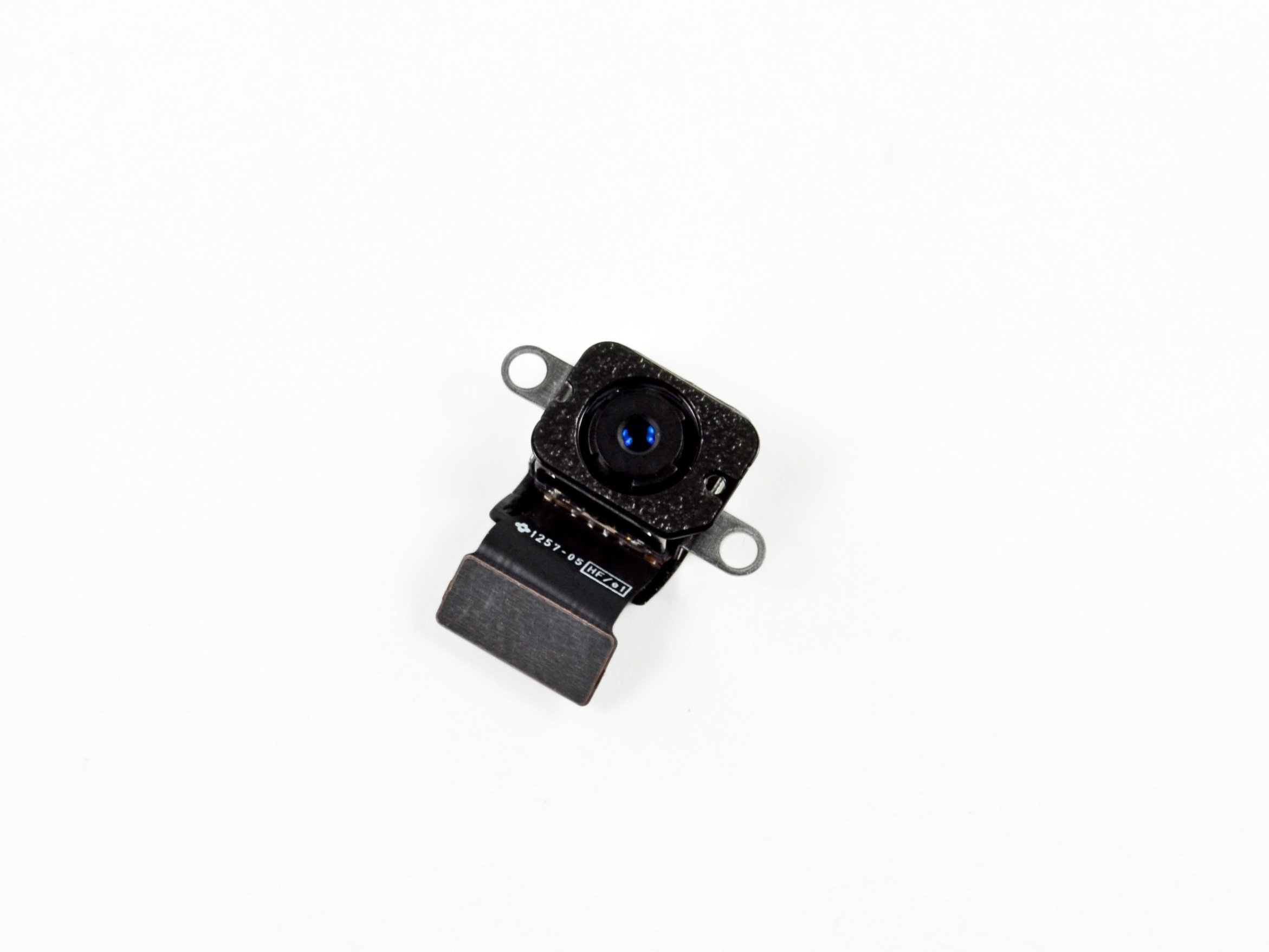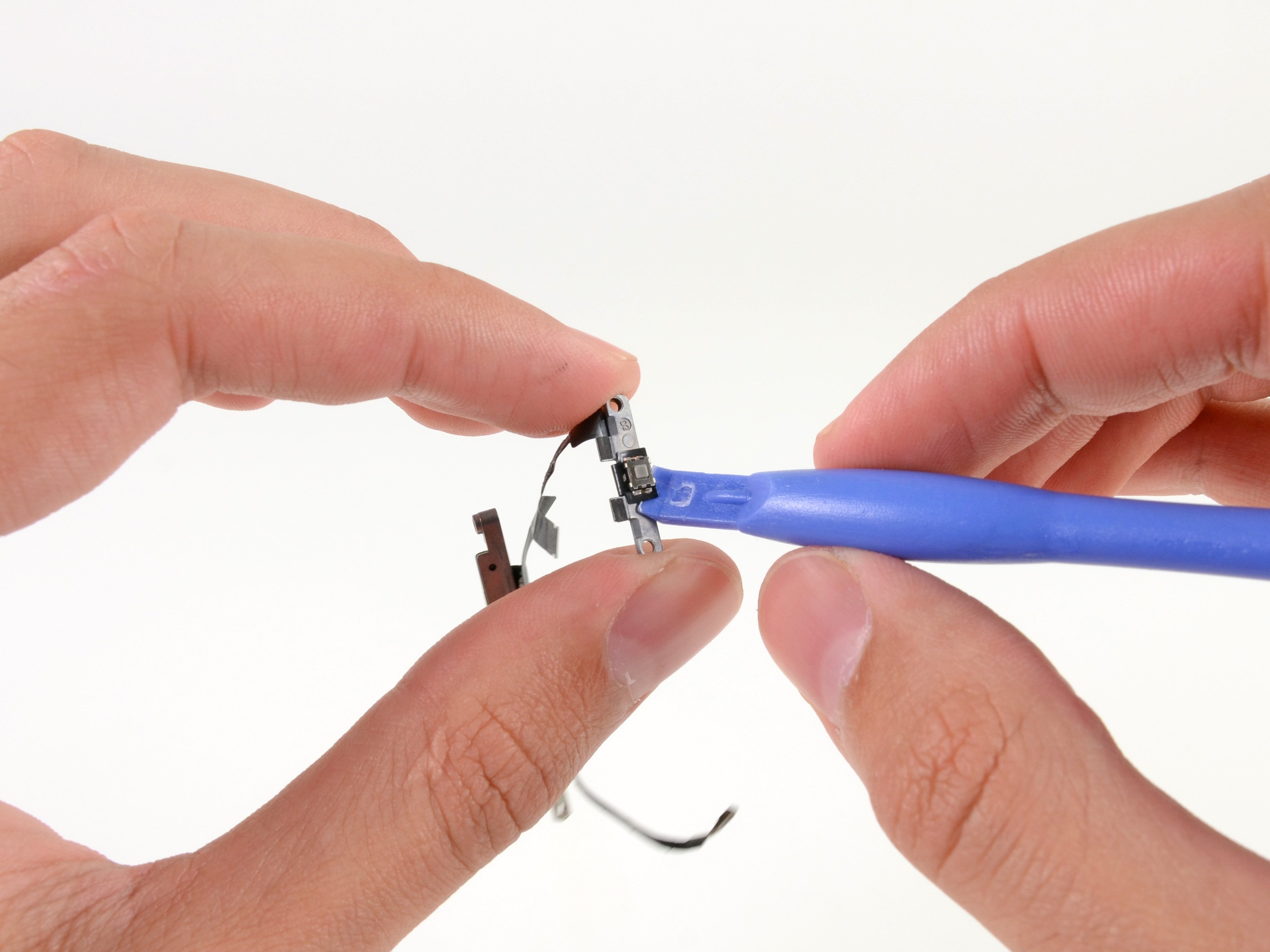iPad 3 Wi-Fi Speaker Replacement
Duration: 45 minutes
Steps: 62 Steps
Follow this guide to swap out the Speaker like a pro.
Step 1
For carousel microwaves: Double-check that the plate is spinning without a hitch. If your iOpener decides to stick, it could overheat and cause some trouble. Keep it smooth and cool for the best performance!
Before diving into the repair, it's a good idea to give your microwave a little TLC. A quick clean will ensure that any stubborn gunk stuck to the bottom won't hitch a ride on your iOpener. Trust us, your future self will thank you!
- Pop the iOpener right in the middle of the microwave to get it warmed up and ready to work its magic.
Tools Used
Step 2
Keep an eye on the iOpener during your repair journey! Overheating can make it go pop, and we definitely don’t want that! Aim to keep it under 100˚C (212˚F) for safe heating.
If your iOpener looks like it's been working out and is a bit swollen, steer clear of it.
If the center of your iOpener is still too toasty to touch, no worries! Just hang tight and let it cool down a bit before giving it another heat-up. A well-heated iOpener should stay cozy for about 10 minutes!
Microwave power varies, so adjust your heating time accordingly. The iOpener is ready when it’s just a tad too warm to keep your finger on it comfortably.
- Pop the iOpener in the microwave for 30 seconds to get it nice and toasty.
- As you go along with the repair, just keep an eye on the iOpener. When it cools down, give it another 30-second zap in the microwave and keep it warm and ready for action!
Tools Used
Step 3
Heads up! The iOpener gets super hot, so handle with care. Oven mitts or gloves are your friends here!
- Carefully take the iOpener out of the microwave by grabbing one of the two flat ends—steer clear of the hot center to keep your fingers happy.
Tools Used
Step 4
The iOpener gets super hot, so make sure you're only grabbing it by the end tabs. Handle with care, we don’t want any burns in the process!
If you don't have a microwave handy, no worries! Just follow this step to warm up your iOpener in a pot of boiling water.
- Grab a pot or pan and fill it with enough water to completely cover an iOpener.
- Bring the water to a rolling boil, then turn off the heat.
- Drop your iOpener into the hot water for 2-3 minutes, making sure it’s fully submerged.
- Use tongs to carefully lift the warmed iOpener out of the water.
- Give it a good dry with a towel so it’s ready to go.
- Your iOpener is all set! Need to warm it up again? Just boil the water, turn off the heat, and soak the iOpener for another 2-3 minutes.
Tools Used
Step 5
Pop on some safety glasses to keep your eyes safe, and handle that LCD screen with care—it’s delicate!
This will help keep those pesky glass shards in check while also adding a little strength when you're prying and lifting the display. Stay safe and steady!
- If your display glass has taken a hit and is cracked, let’s keep it from breaking into even more pieces and protect your hands during the repair. Grab some tape and cover that glass up!
- Apply overlapping strips of clear packing tape over the iPad's display until the entire surface is sealed up tight.
- Now, just follow the rest of the guide as best as you can. Keep in mind that once the glass is cracked, it might keep splintering as you work, so don’t hesitate to use a metal prying tool to gently lift the glass out.
Step 6
Heads up! Since you might be handling some broken glass here, we definitely suggest rocking some safety glasses to keep those sneaky shards out of your eyes.
- Place the iOpener flat against the right edge of your iPad, making sure to smooth it out for a snug fit. We want it to hug that iPad like a best buddy!
- Let the bag chill on the iPad for about 90 seconds. This little waiting game will help you open the front panel like a pro!
Tools Used
Step 7
It might take a little extra oomph to slide the opening tool between the glass and plastic. Just keep things slow and steady, gently wiggling the tool back and forth when needed. Patience is key here!
- Notice that there's a little opening in the iPad's adhesive ring at the upper right corner, about 2.0 inches (~5 cm) down from the top. Let's take advantage of this tiny flaw!
- Carefully line up your tool with the mute button. Gently insert the tip of a plastic opening tool into the gap between the front glass and the plastic bezel. Just slide in the very tip of the tool, enough to create a bit of space.
Step 8
- Be sure to position the tool just right—squeeze it between the plastic display bezel and the front panel glass. You've got this!
Step 9
- Slide the plastic opening tool carefully between the front glass and plastic bezel, then pop in a plastic pick right beside it, making sure they're snug together. You're just getting started, but you're already on the right track!
Step 10
- Gently pull out the plastic opening tool from the iPad, then slide the opening pick a bit deeper under the front glass—about half an inch or so—to keep things moving smoothly.
Step 11
- While you’re loosening the adhesive on the right side of the iPad, pop the iOpener back in the microwave to heat it up again, then place it on the bottom edge to keep things nice and warm.
Tools Used
Step 12
The adhesive is pretty strong, so you might need to use a little muscle here. Take it slow and steady!
If you can spot the tip of the opening pick sneaking under the front glass, just pull it out a tiny bit. While diving in this deep won't cause any harm, it might spread some adhesive goo all over the LCD.
- While the bottom edge gets cozy with the heat from the iOpener, start working your magic by loosening the adhesive along the right edge of your iPad.
- Gently slide the opening pick down the edge, as you go along, giving the adhesive a nice release with each move.
Tools Used
Step 13
You might find it helpful to slide the warmed iOpener back onto the right edge of the iPad as you peel away the adhesive. Just keep in mind, this could depend on how long the iPad has had a chance to cool while you were working your magic.
- If your trusty opening pick starts to feel a little sticky in the adhesive, just give it a gentle roll along the side of the iPad to keep that adhesive loosening up. You've got this!
Tools Used
Step 14
- Before you start prying up that first pick from the bottom corner of your iPad, pop a second pick right under the right edge of the front glass to stop that pesky adhesive from sticking back down.
- Heat up the iOpener once more and gently move it to the top edge of the iPad to loosen things up.
Tools Used
Step 15
The Wi-Fi antenna is snugged into the bottom right edge of the iPad’s rear case, held in place by screws and a cable. Since the antenna’s position is a bit finicky, take it slow and steady here to avoid any permanent oopsies with your Wi-Fi antenna.
- Alright, time to slow things down a bit. The next steps need some extra care.
- You'll be peeling away the adhesive holding the antenna in place on the front panel. Just be gentle, as there are some sensitive parts attaching the antenna at the bottom of the iPad. Follow along closely and take your time!
Step 16
Heads up! Don’t push the pick past the bottom right corner — you don’t want to mess up the Wi-Fi antenna!
- Gently glide the opening pick around the lower right corner of your iPad and watch as the adhesive gives way. You're doing great!
Step 17
Take it slow when moving the opening pick along the bottom right edge of the front panel. The Wi-Fi antenna is sneaky, tucked in close to the corner, and can easily get damaged if the adhesive is messed with too roughly. Be gentle and precise!
Keep the pick gently wedged under the front glass—don’t pull it all the way out. Just slide it back a bit so about 1/8" (3 mm) of the tip stays tucked underneath. Easy does it!
- Gently glide the tip of the opening pick along the bottom edge of the iPad to loosen the adhesive over the Wi-Fi antenna. You're doing great!
Step 18
- Now that you've navigated past the Wi-Fi antenna (that's about 3 inches or 75 mm from the right edge, or right next to the home button), gently reinsert the opening pick all the way in.
- Slide that pick to the right to loosen the adhesive that's holding the Wi-Fi antenna to the front glass. You're doing great!
- Remember, the antenna is fastened to the bottom of the iPad with screws and a cable. This step is key to safely detaching the antenna from the front panel, so when you take off the panel, the antenna stays safe and sound!
Step 19
Heat the iOpener for no more than a minute at a time, then give it a chill-out period of at least two minutes before firing it up again.
If the adhesive has cooled down a bit too much at the bottom edge, just give that iOpener a little heat-up to warm things up where you're working. You've got this!
- Keep gently peeling back the adhesive along the bottom of the iPad, making sure to pull the opening pick out just enough to navigate around the home button. Once you're past the home button, slide that pick back in to a depth of about 1/2 inch (10 mm). You're doing great, keep it up!
Tools Used
Step 20
When working on iPad 4 models, slide your pick in no deeper than 1/2 inch (10 mm) here to keep that home button ribbon cable safe and sound.
- Keep on peeling that adhesive all the way across the bottom edge of the iPad like a pro!
- And hey, don't forget to leave that opening pick snugly tucked under the front glass by the home button. It's got your back!
Step 21
- Pop the iOpener back in the microwave to warm it up, then place it on the left edge of your iPad to gently heat the adhesive there.
Tools Used
Step 22
If your adhesive has cooled down a bit too much, just swap out that iOpener along the top edge and keep on going! If it's feeling a little too cool, give it a quick reheat and get back to work. You've got this!
- Gently glide the opening pick along the top edge of your iPad, giving it a little tug to maneuver around the front-facing camera bracket.
- The adhesive here is quite tenacious, and you might need to exert a bit of effort. Take your time and be cautious—no one wants to slip and have an accidental run-in with their iPad.
- If the opening pick seems to be sticking in the adhesive, try 'rolling' the pick as shown in step 9.
Tools Used
Step 23
If the adhesive is nice and toasty, go ahead and take the iOpener off the iPad to make your life easier. But if it's still a bit too sticky, give the iOpener another heat-up and rest it on the left edge while you tackle the task at hand.
- Keep working that adhesive along the top edge of the iPad, then gently slide the opening pick around the top left corner. You're doing great!
Tools Used
Step 24
The digitizer cable hangs out about 2" (50 mm) up from the iPad's bottom edge. When your pick is around 2.25" (60 mm) from the bottom, it's time to pause and check your progress.
- Gently slide the opening pick along the left edge of your iPad, and watch the adhesive peel away like magic! The adhesive is pretty thin here thanks to the digitizer running the whole left side. Just remember to keep that pick shallow—no more than 1/2 inch (about 10 mm)—to avoid any mishaps with the digitizer. You've got this!
Step 25
Be super careful! The digitizer cable is hanging out just about an inch (25 mm) from the bottom of your iPad. Take your time and watch out for that cable—let's keep it intact!
- With that trusty opening pick still nestled under the lower edge of your iPad, let's gently set free the adhesive in the bottom left corner. You're doing great!
Step 26
It looks like some of the adhesive around the edges of your iPad might have reattached itself. No worries! Just grab a pick and gently slide it under the edge where the front glass is still hanging on, and give that adhesive a little snip!
- Grab an opening pick and gently lift up the bottom right corner of your iPad, then give it a little pinch with your fingers to hold it steady.
Step 27
Watch out for any sneaky adhesive still hanging around, and use an opening pick to carefully slice through any sticky spots holding the front panel in place.
- Grab the iPad by the top and bottom right corners and gently swing the front glass away from the device.
- When putting it back together, give the LCD a quick once-over with a microfiber cloth and some compressed air to zap away dust and fingerprints before snapping the glass back on.
Step 28
- Take out the four 2 mm Phillips #00 screws holding the LCD onto the aluminum frame. You’ve got this!
Step 29
Handle the LCD with care! That ribbon cable is a bit delicate and might snap if you give it too much flex. Keep it safe and sound!
- Grab your trusty plastic opening tool or spudger and gently lift the right edge of the LCD out of the iPad. You're doing great!
- Now, give that LCD a little rotation along its left edge and lay it down nicely on top of the front panel. Keep it up!
Tools Used
Step 30
- Gently nudge the tip of your spudger under the tape that's cozying up to the LCD ribbon cable connector and peel it back with care.
Tools Used
Step 31
- Gently flip up the little retaining flap on the LCD ribbon cable’s ZIF connector—it’s like opening a tiny door.
- Carefully wiggle the LCD ribbon cable free from its socket on the logic board using your fingers or some tweezers.
Step 32
- Gently lift the LCD off the front panel, making sure to avoid touching the screen. Give it a little nudge and let it pop up!
Step 33
If you need to, gently lift the tape that’s holding the digitizer ribbon cable down to the logic board. No stress, just a little love tap!
- Lift the retaining flap on each of the digitizer ribbon cable ZIF connectors with a gentle touch.
Step 34
- Gently use the flat end of a spudger to lift the adhesive holding the digitizer ribbon cable in place.
- With a steady hand, carefully pull the digitizer ribbon cable straight out from its sockets on the logic board.
Tools Used
Step 35
- Gently peel back the digitizer ribbon cable and grab a spudger. Use the flat end to carefully loosen the adhesive holding the cable in place on the rear aluminum case. Take your time, we’re almost there!
Tools Used
Step 36
- With a gentle touch, carefully pull the digitizer ribbon cable out of its snug spot in the aluminum frame.
- Next up, it's time to lift the front panel off the iPad like a pro!
Step 37
If you've got some electrical tape hanging around, peel it off gently from the Wi-Fi antenna, speaker cable, and dock connector cable. They're just hiding out, waiting to be free!
Step 38
Remember to gently lift from beneath the connector, not the socket itself. Applying pressure on the socket could lead to some serious damage. You've got this!
- Time to get your hands a little dirty! First up, gently unplug these connectors from their cozy homes on the logic board:
- Wi-Fi antenna cable
- Speaker connector cable.
- Dock connector cable.
Step 39
- Gently peel back and remove the strip of electrical tape hiding the headphone jack assembly cable connector.
- Carefully use the tip of a spudger to flip up the little retaining flaps on both ZIF connectors that hold the headphone jack cable onto the logic board.
Tools Used
Step 40
- Gently slide the flat end of a spudger beneath the headphone jack assembly cable to free it from the adhesive that's holding it to the rear aluminum frame. You've got this!
- Now, carefully pull the headphone jack assembly cable straight out of its socket on the logic board. Easy peasy!
Tools Used
Step 41
- Time to loosen up the logic board! Kick things off by removing these four screws holding it down to the rear aluminum panel:
- Three 2.1 mm Phillips #00 screws
- One 2.5 mm Phillips #00 screw
Step 42
- Gently lift the logic board out of the iPad's rear case. Take your time, and it'll come out like a charm!
Step 43
- The battery in the third generation iPad is glued down pretty tightly to the aluminum frame with a lot of strong adhesive. You're going to need some patience and a steady hand to get it off, but don’t worry, you’ve got this!
Handle the battery with care as you take it out of the iPad. Batteries have some pretty nasty chemicals inside that are not meant for human consumption or inhalation. Stay safe!
Now, let’s gently peel away the adhesive from under the battery, taking it slow and steady—about 2 inches at a time. This helps keep the battery relaxed and prevents unnecessary stress.
Step 44
The adhesive holds on tight, so you’ll need some muscle to loosen it up. Take it slow and steady, and keep that metal spudger from slipping! Patience is key, and you’ve got this.
- Gently slide the flat end of a metal spudger beneath the battery, starting near the bottom of the iPad. You're doing great!
- Carefully glide the metal spudger about 1.5" under the battery to break that pesky adhesive free. Keep it up!
Tools Used
Step 45
- Just like we did before, gently slide the spudger about 2 inches under those other adhesive strips. You're doing great!
Tools Used
Step 46
- Gently slide the metal spudger under the battery connector to pop loose the adhesive holding it down. Easy does it!
Tools Used
Step 47
- Keep peeling away that adhesive at the top of the battery, and you'll be one step closer to a successful repair!
Step 48
While you slide the spudger deeper under the battery, make sure to keep it nice and flat against the back case. This way, you can avoid any battery-bending drama!
- Pick up where you left off and gently slide the metal spudger about two more inches beneath the battery. Keep it steady, you're doing great!
- Now, keep repeating this for the other adhesive strips until you've got them all loosened up. No rush, you're making progress!
Tools Used
Step 49
- Just like you did before, keep working your way through the strips, loosening the adhesive to about 4 inches deep. Take your time and don’t rush—consistency is key!
Step 50
- For the final pass, slide that metal spudger all the way over to the right edge of the iPad.
- Keep at it until you’ve loosened every last adhesive strip.
Tools Used
Step 51
Grab your trusty metal spudger and gently wiggle it to break free any stubborn adhesive that’s keeping that battery snug as a bug in a rug!
- Carefully ensure all the adhesive holding the battery is loosened up.
- Slowly lift the battery from the left side, swiveling it gently toward the right side of the iPad.
- Take the battery out of the iPad.
Tools Used
Step 52
- Grab the flat end of your spudger and gently nudge that plastic spacer away from the aluminum frame.
- Carefully lift the plastic spacer off the iPad and set it aside.
Tools Used
Step 53
- Unscrew those two 1.8 mm Phillips #00 screws that are holding the dock connector snugly to the rear aluminum case. You're almost there!
Step 54
- Grab your trusty spudger and gently pry up the dock connector. It's time to give it a lift!
- Carefully detach the dock connector from the iPad. You're on the right track!
Tools Used
Step 55
- Let's get those screws out of the way to free the Wi-Fi antenna from the aluminum frame.
- Two tiny 1.75 mm Phillips #00 screws (small head) – handle with care!
- One 4.15 mm Phillips #00 screw – a bit bigger, but still friendly.
- One 1.8 mm Phillips #00 screw (wide head) – the wide one joining the party.
Step 56
- Gently slide the flat end of a spudger underneath the foam adhesive that's holding the Wi-Fi antenna to the speaker assembly. A little patience here goes a long way!
Tools Used
Step 57
- Grab the Wi-Fi antenna and speaker cable together with a confident grip.
- Gently peel the cables away from the aluminum frame—easy does it!
Step 58
- Carefully unplug the speaker cable from the Wi-Fi antenna cable—give them their own space.
- Gently pull the Wi-Fi cable free from the iPad.
Step 59
- Gently tuck the tip of your spudger under the sticky tape holding the speaker to the aluminum frame.
- Carefully slide the spudger beneath the tape to loosen the adhesive without any fuss.
Tools Used
Step 60
- Unscrew the three 4.25 mm Phillips #00 screws that are holding the speaker to the aluminum frame. Nice and easy, just a few twists and you're on your way!
Step 61
- Grab your trusty spudger and gently nudge the speaker assembly out from its cozy spot in the aluminum frame.
Tools Used
Step 62
- Gently nudge and poke around until the corner of the speaker peeks out from under the aluminum frame. A little persistence goes a long way!
- Carefully lift the speaker out of the iPad, and voilà, you're one step closer!
